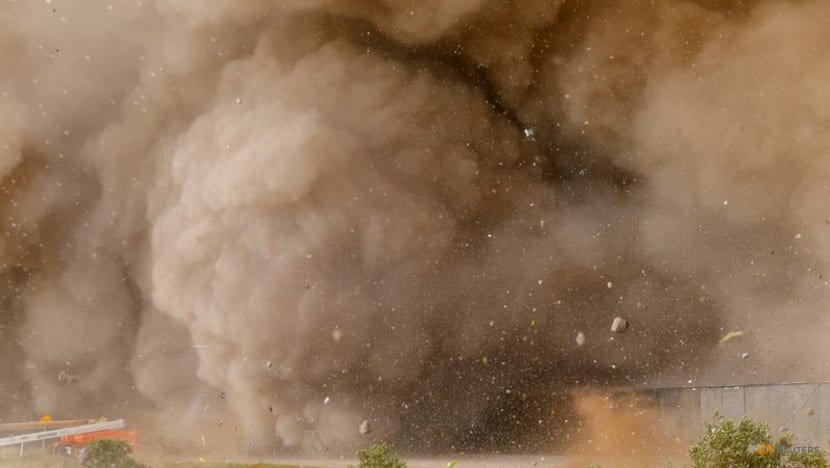Launchpad upgrades imminent after SpaceX's rocket blast pummeled site

FILE PHOTO: Rocks and other debris fly around remote cameras as SpaceX’s next-generation Starship spacecraft atop the Super Heavy rocket lifts off from the company’s Boca Chica launchpad on an uncrewed test flight before exploding near Brownsville, Texas, U.S. April 20, 2023. REUTERS/Joe Skipper
WASHINGTON : Elon Musk's SpaceX will use for its next rocket launch a water-cooled steel plate that can withstand the world's most powerful liftoff after the debut attempt of its Starship rocket to reach space caused extensive launchpad damage.
The giant spacecraft exploded 23 miles (37 km) in the sky, minutes after liftoff in an uncrewed test flight on Thursday.
On the ground at SpaceX's launchsite in Texas, the rocket's engines - there are over 30 - fired with more force than any other rocket in the world, violently pummeling its launchpad floor as it slowly took flight. That blasted a crater several feet deep and sent large chunks of reinforced concrete flying thousands of feet, photos of the aftermath showed.
Musk said on Friday the space company had "started building a massive water-cooled, steel plate to go under the launch mount," but that it would not have been ready before the launch on April 20. He suggested it would be ready for installation before the next launch attempt "in 1 to 2 months."
On Friday, Musk said SpaceX "wrongly thought" - based on a ground test - that the launchpad foundation would survive a single launch even though the engines during that test fired at half their power.
The billionaire CEO had said in 2020 that there would be no need to use such a flame diverter to steer the flames on the ground, but acknowledged that could be the wrong decision.
Other launch sites in the United States, such as SpaceX's own pads at NASA's Kennedy Space Center in Florida, use flame diverters: large cavernous hallways leading away from a rocket's underside to steer its tail of fiery forces in a controlled path, aimed at minimizing damage.
Without such a plan, debris kicked up during liftoff could strike the rocket itself and compromise a mission, engineers say.
"Launch & landing pads are touchy. Any little thing that goes wrong can cause a zipper effect that creates a giant problem," Phil Metzger, a planetary scientist at the University of Central Florida who has studied the ground effects of rocket launches and landings, said on Twitter.
"That's because you're trying to safely dispose of enough super high energy gas to shoot a rocket into the sky."
The latest SpaceX failure illustrated a rocket development culture at the company that embraces fast-paced tests and failures of prototypes that provide data to improve the vehicle's design.
The Federal Aviation Administration, which regulates launch site safety and oversees technical investigations into commercial rocket mishaps, will need to sign off on changes to Starship's launchpad infrastructure before its next launch attempt, said Tom Marotta, who advises other space companies on launch regulations.
"The bigger challenge for SpaceX is FAA evaluating its steel plate solution and deciding that it meets the regulations in a timely manner," he said.










